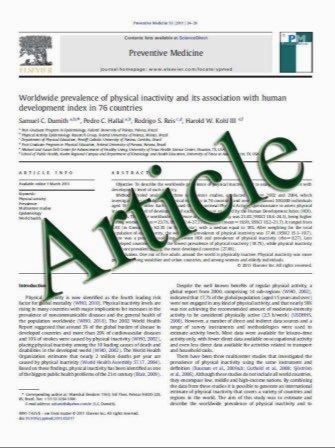Effects of hyperbaric oxygen treatment on auditory hair cells after acute noise damage
- نوع فایل : کتاب
- زبان : انگلیسی
- مؤلف : Gleice Cristina Colombari Maria Rossato Omar Feres Miguel Angelo Hyppolito
- چاپ و سال / کشور: 2011
Description
Acute acoustic trauma (AAT) is a sudden sensorineural hearing loss caused by exposure of the hearing organ to acoustic overstimulation, typically an intense sound impulse, hyperbaric oxygen therapy (HOT), which favors repair of the microcirculation, can be potentially used to treat it. Hence, this study aimed to assess the effects of HOT on guinea pigs exposed to acoustic trauma. Fifteen guinea pigs were exposed to noise in the 4-kHz range with intensity of 110 dB sound level pressure for 72 h. They were assessed by brainstem auditory evoked potential (BAEP) and by distortion product otoacoustic emission (DPOAE) before and after exposure and after HOT at 2.0 absolute atmospheres for 1 h. The cochleae were then analyzed using scanning electron microscopy (SEM). There was a statistically significant difference in the signal-to-noise ratio of the DPOAE amplitudes for the 1- to 4-kHz frequencies and the SEM findings revealed damaged outer hair cells (OHC) after exposure to noise, with recovery after HOT (p = 0.0159), which did not occur on thresholds and amplitudes to BAEP (p = 0.1593). The electrophysiological BAEP data did not demonstrate effectiveness of HOT against AAT damage. However, there was improvement of the anatomical pattern of damage detected by SEM, with a significant reduction of the number of injured cochlear OHC and their functionality detected by DPOAE
Eur Arch Otorhinolaryngol (2011) 268:49–56, Received: 22 February 2010 / Accepted: 6 July 2010 / Published online: 21 July 2010 Springer-Verlag 2010


